#kill your lawn
Text
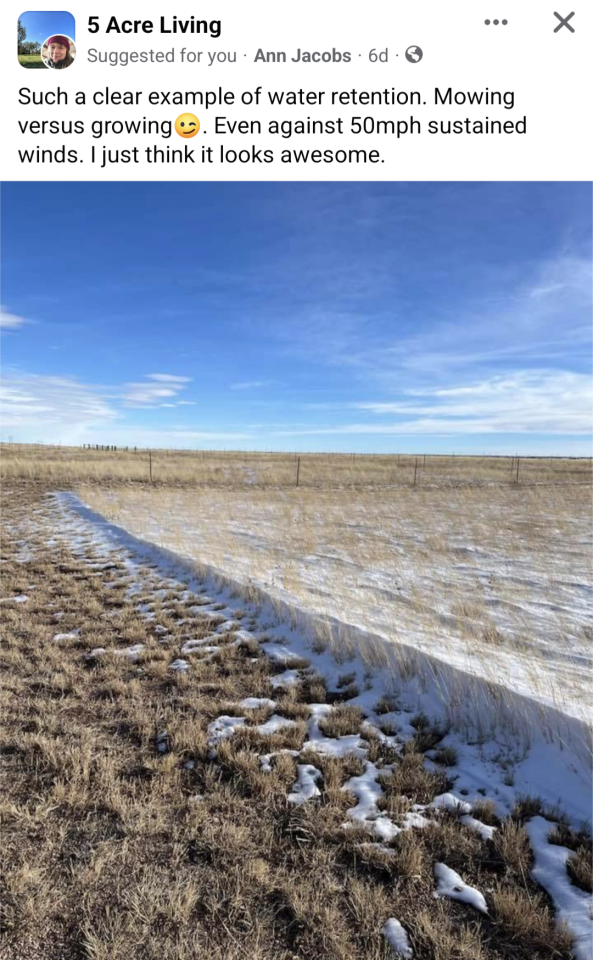
This is actually a really interesting type of water retention that long grass does that I've never thought about before!
You can see how much slower the snow on the long grass is melting, which creates a slower percolation of water into the ground!
It's amazing what a difference vegetation can make for communities that struggle with drought conditions!
21K notes
·
View notes
Text
How people in the USA loved nature and knew the ways of the plants in the past vs. nowadays
I have been in the stacks at the library, reading a lot of magazine and journal articles, selecting those that are from over fifty years ago.
I do this because I want to see how people thought and the tools they had to come up with their ideas, and see if I can get perspective on the thoughts and ideas of nowadays
I've been looking at the journals and magazines about nature, gardening, plants, and wildlife, focusing on those from 1950-1970 or thereabouts. These are some unstructured observations.
The discourse about spraying poisons on everything in your garden/lawn has been virtually unchanged for the past 70 years; the main thing that's changed is the specific chemicals used, which in the past were chemicals now known to be horribly dangerous and toxic. In many cases, just as today, the people who opposed the poisons were considered as whackos overreacting to something mostly safe with a few risks that could be easily minimized. In short, history is not on the pesticides' side.
Compared with 50-70 years ago, today the "wilderness" areas of the USA are doing much better nowadays, but it actually appears that the areas with lots of human habitation are doing much worse nowadays.
I am especially stricken by references to wildflowers. There has definitely been a MASSIVE disappearance of flowers in the Eastern United States. I can tell this because of what flowers the old magazines reference as common or familiar wildflowers. Many of them are flowers that seem rare to me, which I have only seen in designated preserves.
There are a lot more lepidopterans (butterflies and moths) presumed to be familiar to the reader. And birds.
Yes, land ownership in the USA originated with colonization, but it appears that the preoccupation with who owns every little piece of land on a very nitpicking level has emerged more recently? In the magazines there is a sense of natural places as an unacknowledged commons. It is assumed that a person has access to "The creek," "The woods," "The field," "The pond" for simple rambling or enjoyment without personally owning property or directly asking permission to go onto another person's property.
There is very little talk of hiking and backpacking. I don't think I saw anything in the magazines about hiking or going on hikes, which is strange because nowadays hiking is the main outdoor activity people think of. Nature lovers 50-70 years ago described many more activities that were not very physically active, simply watching the birds or tending to one's garden or going on a nice walk. I feel this HAS to do with the immediately above point.
Gardening seems like it was more common, like in general. The discussion is about gardening without poisons or unsustainable practices, instead of trying to convince people to garden at all.
Overall, the range of animals and plants culturally considered to be common or familiar "backyard" creatures has narrowed significantly, even as the overall conservation status of animals and plants has improved.
This, to me, suggests two things that each may be possible: first, that the soils and environments of our suburbs and houses have sustained such a high level of cumulative damage that the life forms they once supported are no longer able to live, or second, that our way of managing our yards and inhabited areas has become steadily more destructive. Perhaps it may be the case that the minimum "acceptable" standard of lawn management has become more fastidious.
In conclusion, I feel that our relationship with nature has become more distant, even as the number of people who abstractly support the preservation of "wilderness" has increased. In the past, these wilderness preservation initiatives were a harder sell, but somehow, more people were in more direct contact with the more mundane parts of nature like flowers and birds, and had a personal relationship with those things.
And somehow, even with all the DDT and arsenic, the everyday outdoor spaces surrounding people's homes were not as broadly hostile to life even though the people might have FELT more hostile towards life. In 1960, a person hates woodpeckers, snakes and moths and his yard is constantly plagued by them: in 2024, a person enjoys the concept of woodpeckers, snakes and moths but rarely sees them, and is more likely to think of parks and preserves as the place they live and need to be protected. Large animals are mostly doing better in 2024, but the littlest ones, the wildflowers and bugs and birds, have declined steeply. It's not because "wilderness" is less; it seems more because non-wilderness has declined in quality.
2K notes
·
View notes
Text
*casually posts this at the same time to further my agenda of growing native plants instead of grass and shitty ornamentals*


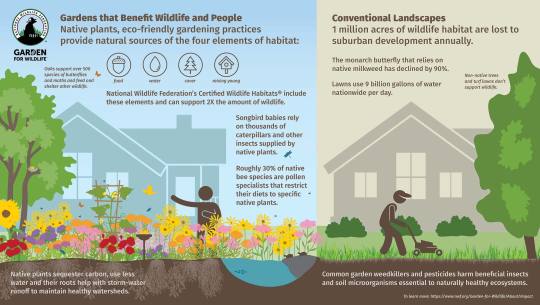


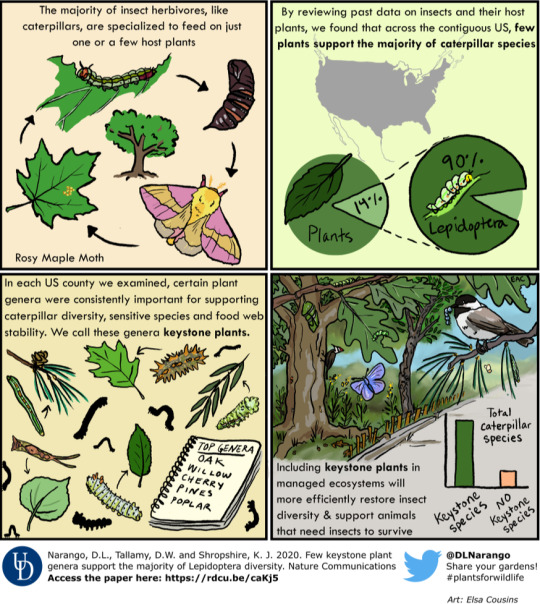

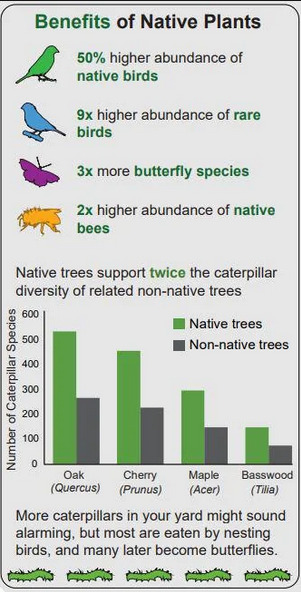

#gardening#water conservation#biodiversity#kill your lawn#native plants#native pollinators#pollinator garden#climate change#sustainability#environmental rehabilitation#habitat restoration#wildflowers#native flowers#animals#water crisis#didnt mean to post that grass one whoops. i think i skimmed it and wasnt thinking about it too much#but ig its true grass would be better than roads. lets just uh. make it native grass yaknow?
241 notes
·
View notes
Text
I cannot believe I’m arguing with the most idiotic ecofascist bullshit today:
Me: Serviceberries are delicious! Plant more of them! Eat them!
Some white lady on Facebook: ~what about the birds??? What will THEY eat??????~
….
Listen, the myth that the Americas were some ~untouched wilderness~ is not just bullshit it is DESTRUCTIVE bullshit. In 1491, the Americas were a garden. These food forests were actively cultivated, just bc they look different than European agriculture does not in anyway make them less valid. Like, ok Yes, if you live in some suburban hellscape that’s been turned into HOA-enforced lawns, SURE, leave the berries for the birds. But to demand that be the rule for everyone, everywhere?? Fuck that. Last year the serviceberry crop was so bountiful they literally rotted in clusters like grapes on the vine. ~what about the birds~ THE BIRDS WERE DRUNK ON THE GROUND, KAREN! FAT AND ROUND! My woods turn white in the spring bc there are so many serviceberry trees. Right now the hazelnuts are flowering their little peener catkins as far as the eye can see, and because nothing has leafed out yet, THATS FAR!
Kill your lawn. Plant berries and fruit trees. EAT THEM!

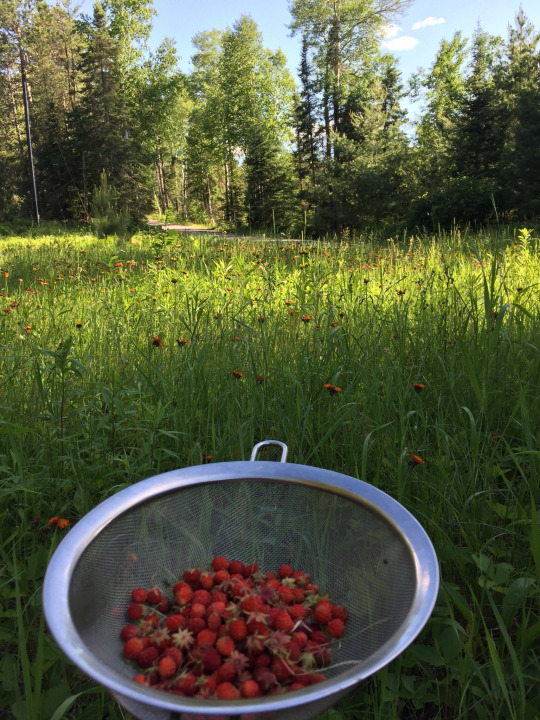
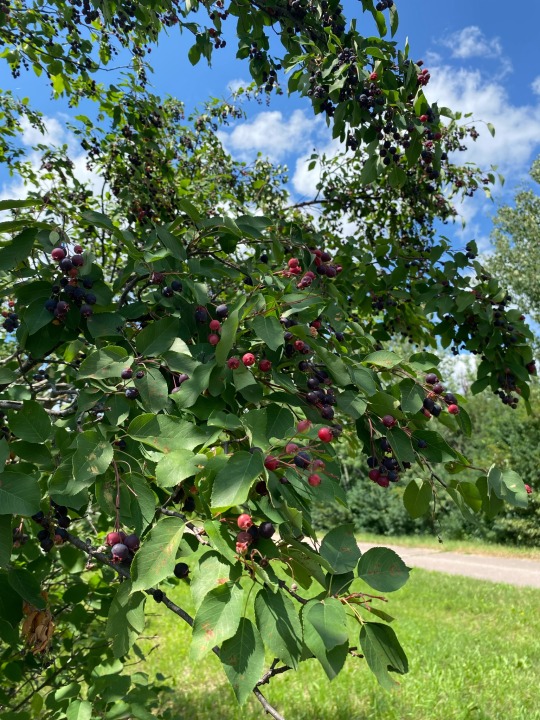
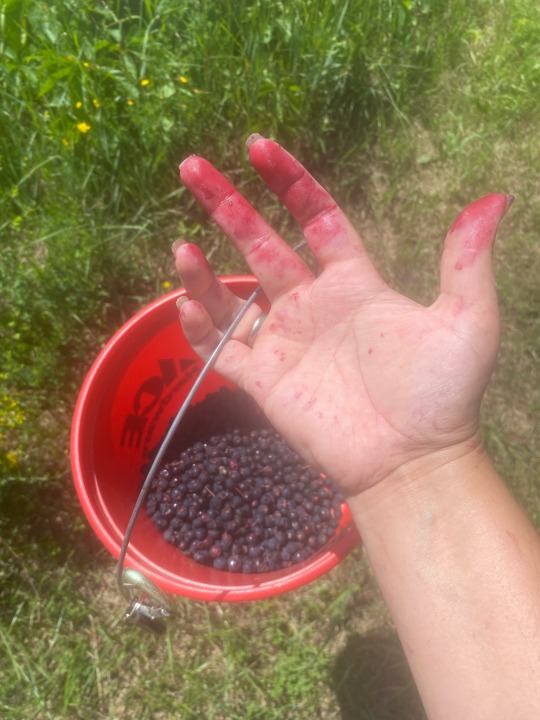

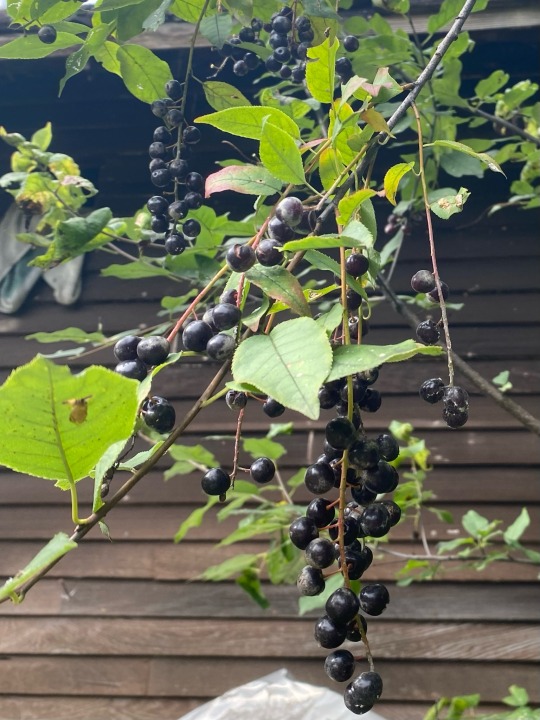
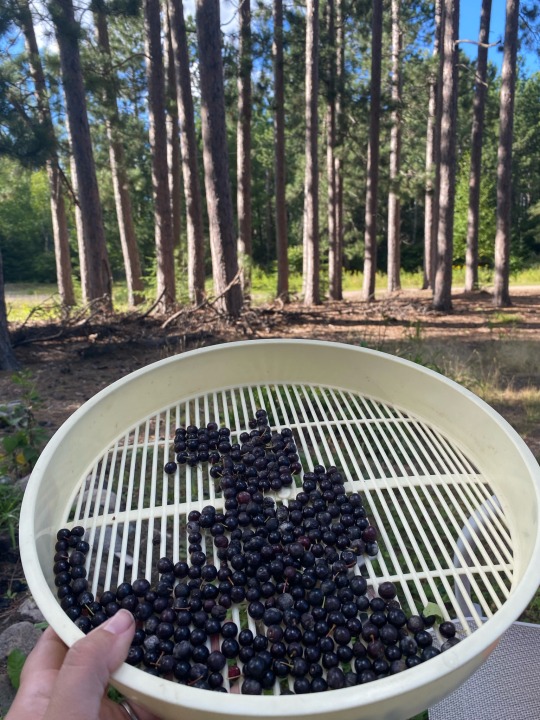
#rant#in the blessed words of Olly Costello: we have been given all the gifts#meanwhile in minnesota#foraging#kill your lawn#there has never been an ‘untouched wilderness’ here and to insist on enforcing that causes SIGNIFICANT HARM!
36 notes
·
View notes
Text

Large mammals such as elephants, whales, and tigers tend to get a disproportionate amount of attention when it comes to conservation. Birds and beneficial insects are often overlooked.
Northern Ontario residents are building bee hotels to attract them and to encourage them to produce more bees.
Bee my guest: Northerners build hotels for pollinators as spring unfolds
Lawns are one of the worst things for pollinators and birds. They encourage wasteful water practices and unnecessary chemical use.
Michael Pollan put it best...
"A lawn is nature under totalitarian rule."
It's time to help our airborne friends and overthrow the tyranny of lawns.
youtube
Natural looking green space may require a bit more effort at the start of the growing season but is a lot less work from week to week. It's worth it just to get rid of the noise pollution and fumes from lawn mowers.
Get your local municipal governments interested in supporting nature-friendly and climate-friendly landscaping practices.
#birds#bees#nature#bee hotels#north ontario#herbicides#pesticides#lawns#conservation#water use#nature under totalitarian rule#michael pollan#kill your lawn#monte wolverton
102 notes
·
View notes
Text
What breaks my heart a little working in lawn care (other than the environmental destruction and the property/colonial mindset and, well, all of it) is what it means to some of my customers. I've had multiple women who hired my company after their husbands died, all of which express this deep heartfelt gratitude for what I do... like I'm filling in the shadow of these men. Anything can be a symbol I guess, but I really wish your symbol didn't hurt all of us.
24 notes
·
View notes
Text


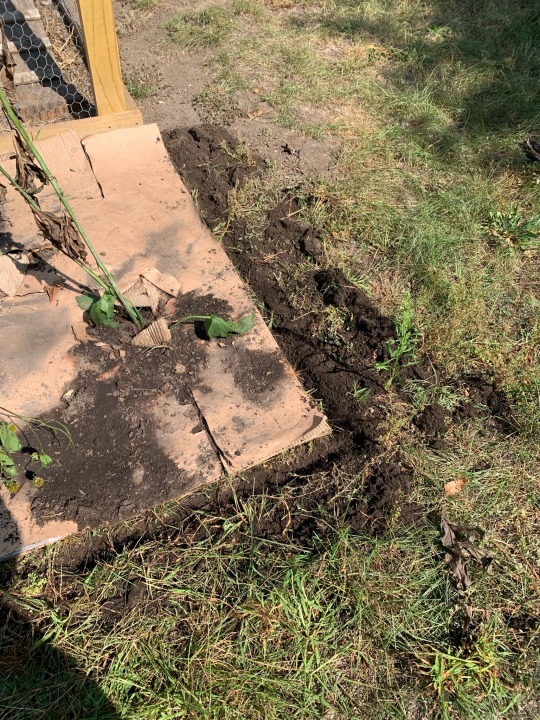

Planted some of the cone flower / Rudbeckia I received from my garden friend on Wednesday and wanted to share my process! I’m not an expert but this is my quick-and-dirty method for converting lawn to garden when I don’t have a bunch of time to prep the site.
1) watered the planting area and threw down some cardboard, wet on both sides overlap as needed - weeds will pop through the gaps!
2) cut an X (or sometimes * shape) in each spot where I wanted to plant. For each X, I would pull back the cardboard, dig a hole, insert plant, and cover with dirt. Flatten the cardboard (either folded over or flat, just depended on how big the bunch of plants were) and water.
3) Optional, but I like to dig a very small trench at the edge of the cardboard to keep mulch somewhat contained
4) re-soak cardboard if needed, add layer of mulch on top, and water mulch. I’ve recently started using gardening straw because I don’t want to risk jumping worms with wood chip mulch, and I’ve liked it so far (I haven’t had luck getting arborist chips). It lighter to transport and easy to spread around. It might grow some weeds, but the trade off is worth it to me. I’m thinking they should be easy to pull since they are on top of the cardboard barrier.
And that’s it! Excited to see how it fills in next year and for it to be future shade my chickens in the afternoon. Since the grass underneath hasn’t been killed, weeds will want to pop up through the holes I’ve cut in the cardboard, so i plan to keep an eye on that!
17 notes
·
View notes
Text
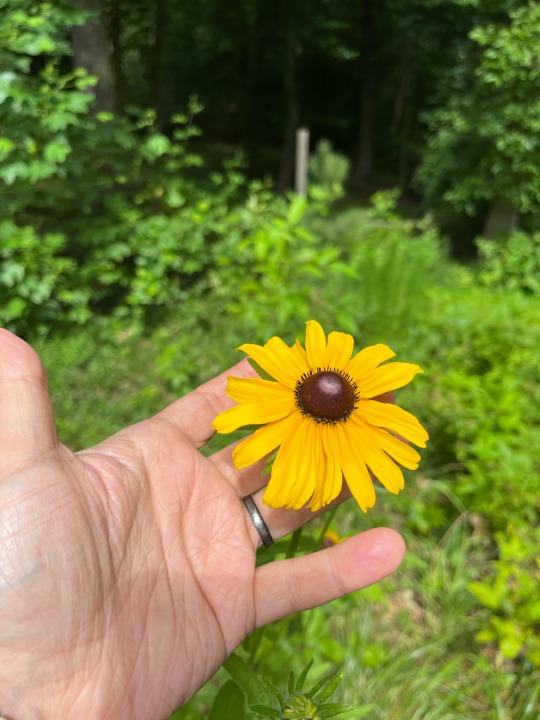
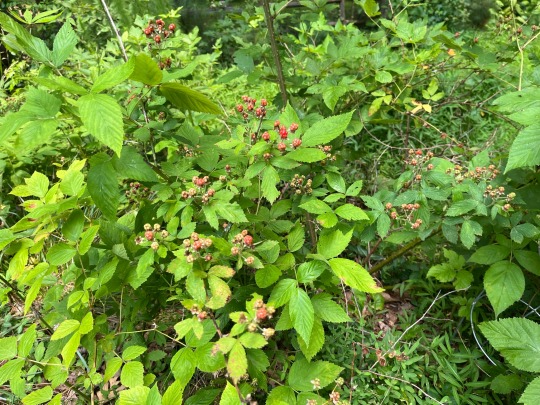
The previous owners of our house were Golf Course Manicured Lawn people and we are Kill Your Lawn And Live In A Meadow people. It hasn’t always gone great so far but this June we have both a patch of sunflowers (presumably the wilder Jerusalem Artichoke variety, idk) and at least three different fruiting blackberry bushes, none of which we planted on purpose and both of which like to spread. Nature take the wheel
23 notes
·
View notes
Text
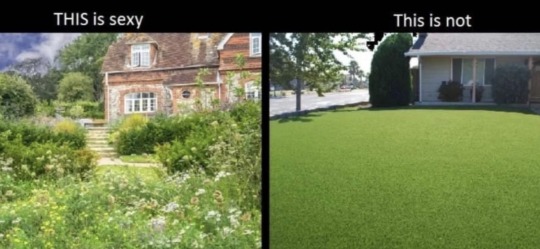
14 notes
·
View notes
Link
“Whatever it was, their neighbor’s mounting resentment burst to the fore in the fall of 2017, in the form of a letter from a lawyer for their homeowner association that ordered the Crouches to rip out their native plant beds, and replace them with grass.
The couple were stunned. They’d lived on their quiet cul-de-sac harmoniously with their neighbors for years, and chose native plants to help insects, birds and wildlife thrive. Now the association was telling them that their plantings not only violated the bylaws, but were eyesores that hurt property values. “Your yard is not the place for such a habitat,” the letter read.
The Crouches were given 10 days to convert their front yard into a lawn that looked like everyone else’s. But instead of doing what they were told, the couple fought back, and ended up paving the way for a groundbreaking state law.“
5K notes
·
View notes
Text
I will never stop talking about how messed up it is that in North America, short, mown grass surfaces in outdoor urban/suburban environments are seen everywhere and feel right, intuitive, and natural, when plant communities that could be described as "low grassy turf" straight-up did not exist in most of North America prior to European colonization.
Everywhere millions of acres of neglected curbs, swaths of ground separating fast food places or gas stations, spaces surrounding churches, roadsides, ditches, parks, yards, are maintained using carbon-emitting machinery as flat grass surfaces for reasons so obvious to us, we've forgotten them.
It is a labor-intensive, wasteful, effortful ritual of contempt and neglect for the land. A space of mowed grass between a gas station and a road is so utterly empty, so utterly identical to every other space of mowed grass, that the human mind doesn't even process it as "something," it's just space. No one would rest here, no one would sit here, no one uses this space, there is nothing beautiful or life-giving or important or worthy of conscious register here. It may not even occur to the mind that there is "something" in between the gas station and the road.
So many thousands and thousands of acres of space are nothingified like this. Even just a single square foot of space can be so RICH and exploding with life, if you love it. If you tend to it and give it your heart. How much land is never glanced at, hardly walked upon, except to have a lawn mower driven over it. How much life-giving habitat razed into a cruel, butchered parody of a murkily remembered European landscape.
Think how priceless a tiny little garden, a patch of sunbeams in a forest, a small trickle of stream, a single mossy log, can be! A person in communion with nature can love a place by the square inch! No place on Earth ever was "nothing!"
But all around me I see the flat carpets maintained by machines. I see so many precious square inches of Earth ignored and treated as nothing instead of loved and listened to closely and cared for.
How many strawberries could have grown here? How many little mushrooms could have popped out of this soil? How many kinds of lichen and moss could have fit on a medium-size boulder here, before it was all destroyed and made into nothing but a surface to be run over with a lawn mower?
3K notes
·
View notes
Text
"Now, as a follow-up I did forget to mention the *mwah* chef’s kiss to the whole WWI landscape that we’ve created here which will be transformed into a beautiful and lush, uh and vivacious, uh greenery y’know native plant garden, uh, in a matter of only a few months the best part about this is getting the rocks from the side of the road. Go pilfer em from a quarry, if you gotta take em from some sort of corporate landscaping somewhere you can do that too, k if you got a small sedan you can fit a couple boulders in a sedan, y’know decent size, maybe the size of a medium sized dog no bigger (it’s probably all you can carry anyway) and then just place them throughout the yard. And this is good too cause if the city ever does come try to mow your lawn after you’ve ignored numerous weedy lot violations it’ll damage whatever equipment they use to do it too. So, decorating with rocks, the hardscaping, don’t forget that, very important."
-Joey Santore, in his newest video where he demonstrates how to rip up a lawn and plant a native plant garden in its place
4 notes
·
View notes
Text
Last year we didn’t spray or water or weed the back yard. Mostly this was pure executive dysfunction but we were also kind of interested in seeing what would move in when we gave up on trying to grow grass that doesn’t belong here.
So far this year, we’ve seen a ton of henbit deadnettle, wild violets, chickweed, and yellow wood sorrel. The clover and ground cherries are moving in now. We’re leaving the dandelions to grow where they may so they can help break up our hard-packed clay soil. We’ve set up three huge beds to host native wildflowers, thanks to online nurseries that sell seeds and live plants.
There’s some initial investment: we need to water a little here and there to make sure our new weeds get established and I have to go around every day to pull up the problem children (mostly white mulberry and Amur honeysuckle, which are aggressive pests). But once everything gets going, the idea is we won’t need to mow or water, ever, and there will be exciting little visitors coming to eat seeds and drink nectar and what have you.
And we’ll have a miniature prairie in our back yard!
12 notes
·
View notes
Text

Watching bumblebees gorge on asters is one of my favorite parts of fall :)
ID: A photograph of a bumblebee hanging off of a cluster of white flowers with pink ray florets. Another cluster of flowers, a stem, and a leaf form a triangle around her in the foreground.
2 notes
·
View notes
Text
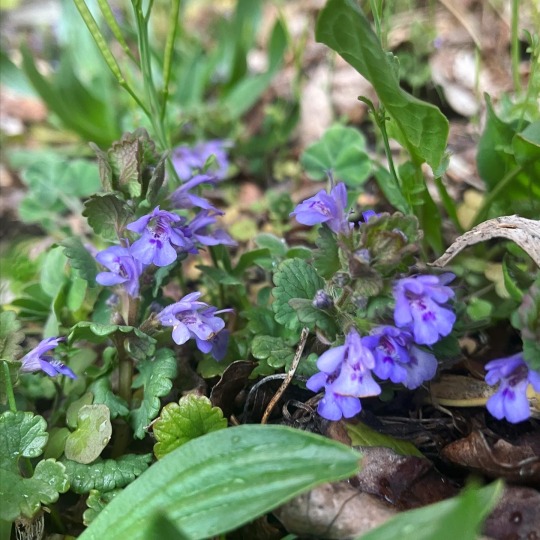
Glechoma hederacea
🌿Glechoma hederacea
Family: Lamiacea (Mint)
Common Names: Ground Ivy, Creeping Charlie, & gill-over-the-ground
Perennial herbaceous plant
Native to Europe, and introduced to North America as early as the 1800's. It is considered Invasive in the U.S as it forms dense patches that can push out native plants.
Pollinators include: Anthophora furcata (Fork-tailed flower bee) Anthidum manicatum (European wool carder bee)
Anthophora plumipes (Hairy-footed flower bee)
Anthophora quadrimaculata (Four-branded flower bee)
Anthophora abrupta (Minor bee)
Osmia aurulenta (Gold-fringed mason bee)
Osmia caerulescens (Blue mason bee)
Osmia lignaria (Blue orchard bee)
#botany#horticulture#botanical#flowers#purple flowers#wildflowers#springtime#invasive species#invasive plants#gardening#plants#the more you know#the more you learn#science rules#creeping charlie#kill your lawn#let them pollinate#flowers for the bees#save the bees#let the bees feed#perennial grasses
8 notes
·
View notes